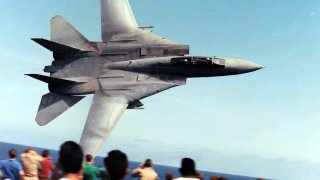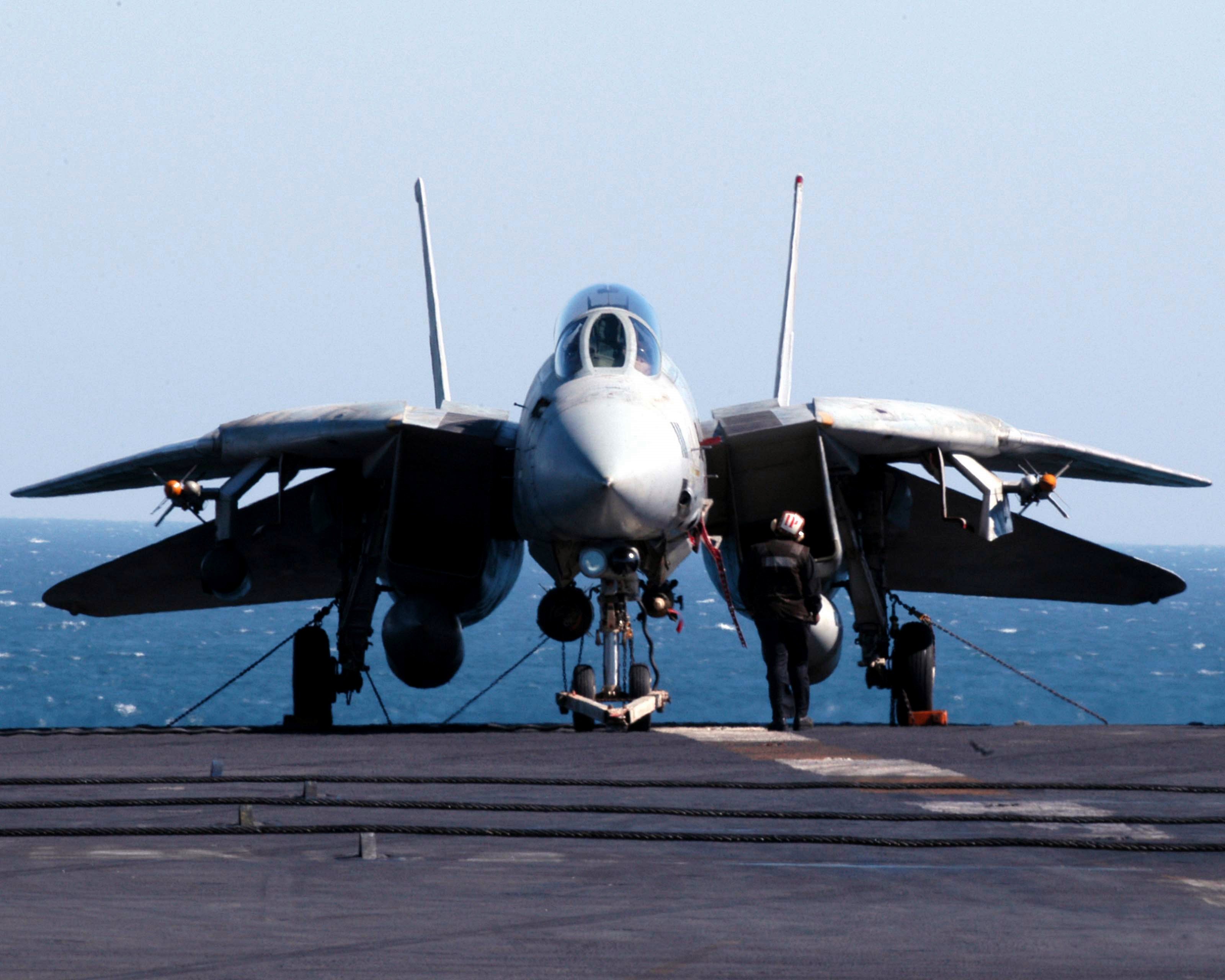
In a famous photo from 1988 (see the link to the left), Capt. Dale “Snort” Snodgrass, executive officer of the VF-33 Starfighters, performs a low level maneuver known as a banana pass off the USS America aircraft carrier.
The photo - and the one shown above - became an instant classic for military aviation fans, demonstrating the power and precision of jet fighters.
Introducing the F-14 Tomcat
Snort in the photo is piloting a Grumman F-14 Tomcat, the U.S. Navy’s premier fighter-interceptor during the latter half of the Cold War.
Developing a replacement for the F-4 Phantom, the Tomcat’s designers in the 1970s drew extensively on lessons learned during the Vietnam War to produce a highly capable fighter. To replace the F-4, the Navy was looking to acquire an aircraft that could intercept and shoot down missiles fired at its carriers while also holding its own in air-to-air combat. Its distinctive swept wings allow it to cruise at Mach-2.4 while also maintaining control at the slow speeds required for carrier recovery.
Specs and Capabilities
This slow-speed maneuvering capability was also essential in dogfights, where the F4 Phantom was found to be less agile than the Soviet MiGs against which it faced off. Furthermore, many dogfights in Vietnam ended in a draw even if American pilots were able to gain an advantageous position, because early missiles were highly prone to failure. To counter this, the Navy insisted on the inclusion of a gun on the F-14. Should the high-tech missiles fail, good old-fashioned bullets would do the trick.
In addition to interception and dogfighting, the F-14 could be fitted with air-to-ground rockets and bombs. It saw combat in Operations Enduring Freedom and Iraqi Freedom striking targets’ JDAMs.
Low-Level Pass or Banana Pass
The photo, which shows an F-14 up on a wing apparently right next to the carrier, puts the capabilities of the aircraft on proud display.
Beginning from behind the ship, Snort went to full afterburner and rolled up on a wing as he passed the stern of the ship for a dramatic moment.
While Snodgrass did say “it’s not risky at all with practice,” there are some definite dangers involved with this maneuver. When an aircraft banks, its lift vector — the imaginary line that represents the force of the wings keeping it aloft — is no longer pointing directly upward. If the pilot does nothing else, the plane will begin to sink. To counteract this effect, the pilot must pull back on the stick. The greater the angle of bank, the greater the back stick.
As Snodgrass says, he was at “an 85 degree angle of bank” requiring “a 2-3 g turn.” The catch is that he was turning into the carrier with little room for error. If anyone was to pull off this maneuver, it would be Snodgrass, the first Naval Aviator to qualify on the F-14 as his first platform. Named “Fighter Pilot of the Year” by the U.S. Navy in 1985 and “TopCat of the Year” by Grumman in 1986, Snodgrass knew his machine and its limits.

Following his Navy career, Snodgrass continued his impressive flying feats, learning to pilot a variety of retired warbirds and flying in multiple airshows. Sadly, he was killed in a crash in 2021. His legacy as an acclaimed aviator lives on in this photo.
No comments:
Post a Comment